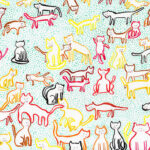Cat eyes hold a captivating allure. Often described as mysterious, a cat’s eyes are remarkably expressive, revealing their emotions, moods, and even underlying health conditions. Among the mesmerizing spectrum of feline eye colors, from sparkling blues to vibrant oranges, there lies a unique and often overlooked beauty: the Brown Eyed Cat.
While not technically true brown in the purest sense, the rich amber, hazel, copper, and deep gold hues that appear as brown in cats are among the rarest and most intriguing. These warm, earthy tones add a distinct depth and soulful quality to a cat’s gaze, setting them apart in the feline world.
cats with blue eyes
cats with yellow eyes
cats with green eyes
cats with orange eyes
cats with gold eyes
cats with brown eyes
cats with copper eyes
cats with hazel eyes
cats with different-colored eyes
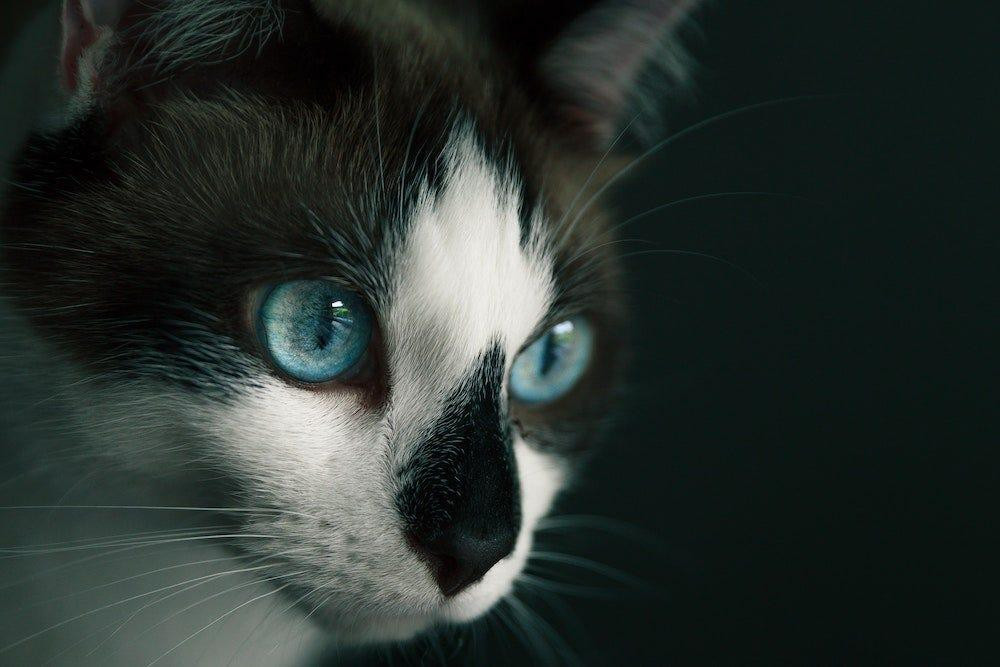 A regal tuxedo cat with piercing blue eyes, showcasing the striking contrast against its black and white fur.
A regal tuxedo cat with piercing blue eyes, showcasing the striking contrast against its black and white fur.
Unveiling the Secrets Behind Cat Eye Colors
Rarity Across the Spectrum
When considering the frequency of different cat eye colors, yellow and orange shades take the lead, accounting for an estimated 50-60% of the cat population. Green eyes are less common, seen in approximately 10-15% of cats. Blue-eyed cats are even rarer, representing only about 3-5%. At the pinnacle of rarity are cats with heterochromia, or two different eye colors, occurring in less than 1% of felines. Within this rarity scale, the shades we perceive as brown, including deep golds, coppers, hazels, and ambers, are particularly scarce, adding to the mystique of the brown eyed cat.
The Science of Cat Eye Color: Melanin’s Role
The captivating colors of cat eyes are dictated by melanocytes, specialized cells responsible for producing melanin. Melanin, the pigment that colors skin, hair, and eyes, determines the intensity and type of pigmentation in the iris’s front and rear.
- High melanocyte levels: Result in the warmer tones like orange, gold, and the rich shades that appear as brown. These cats have a higher concentration of pigment.
- Low melanocyte levels: Typically lead to cooler colors such as green and yellow. These eyes have less pigment concentration.
- Absence of melanocytes: Leads to blue eyes, where the color is not due to pigment but rather the way light scatters, or in rare cases, pink eyes in albino cats.
Breed Predisposition vs. Coat Color Myths
While coat color is often considered a factor, cat eye color is primarily linked to breed genetics, not necessarily fur color. A notable exception is the association between white fur and blue eyes, but this is often due to the prevalence of this combination in purebred cats.
Purebred cats generally exhibit more intense and defined eye colors compared to mixed breed cats. Domestic Shorthairs, Domestic Longhairs, and other mixed breeds often display softer, paler shades of yellow, green, or hazel, and are less likely to showcase the deeper, richer tones seen in brown eyed cats.
Kittenhood Blues: The Color Evolution
Similar to human babies, kittens are typically born with blue eyes. This “kitten blue” is a temporary phase. As they mature, melanocytes begin to produce pigment, and the true eye color starts to emerge. This color transition usually begins around 4 to 6 weeks of age, with the final, adult eye color settling in by 2 to 4 months. Observing this color change can be an exciting part of kitten development, revealing whether your feline friend will sport blue, green, yellow, or perhaps the rarer hues of a brown eyed cat.
The Nighttime Glow: Tapetum Lucidum
The mesmerizing glow of cat eyes, especially in low light, is due to a layer of tissue behind the retina called the tapetum lucidum. This iridescent layer reflects light back through the retina, enhancing their vision in dim conditions. This reflection is what causes the characteristic “eye shine” seen at night or in photographs taken with flash. The tapetum lucidum contributes to cats’ superior night vision compared to humans and can make their eyes appear even more striking, regardless of their color, including the warm depths of a brown eyed cat.
Exploring the Spectrum: Cat Eye Colors in Detail
Blue Eyed Cats: The Absence of Pigment
Blue eyes in cats are a result of the complete absence of melanin in the iris. The blue hue is not actually a pigment but is caused by the way light scatters as it reflects off the curved iris surface. Several cat breeds are known for their striking blue eyes, often linked to white fur due to the genetic connection of genes affecting both coat and eye color pigmentation.
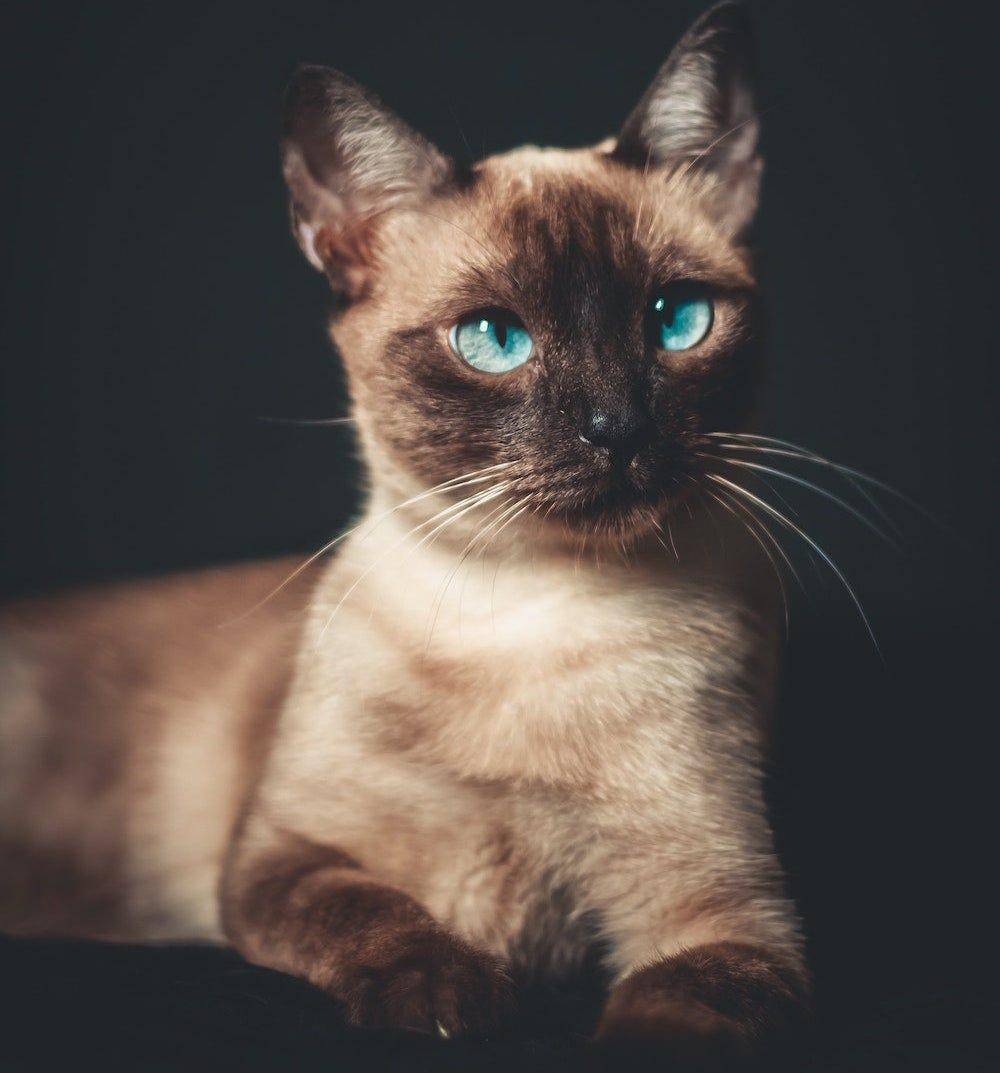 A striking Siamese cat with deep, sapphire blue eyes, a breed renowned for its distinctive pointed coat and vivid gaze.
A striking Siamese cat with deep, sapphire blue eyes, a breed renowned for its distinctive pointed coat and vivid gaze.
The Siamese cat, originating from Thailand, is famous for its colorpoint coat, sapphire blue eyes, and distinctive vocalizations. Historically, crossed eyes were common in Siamese cats, but selective breeding has largely reduced this trait.
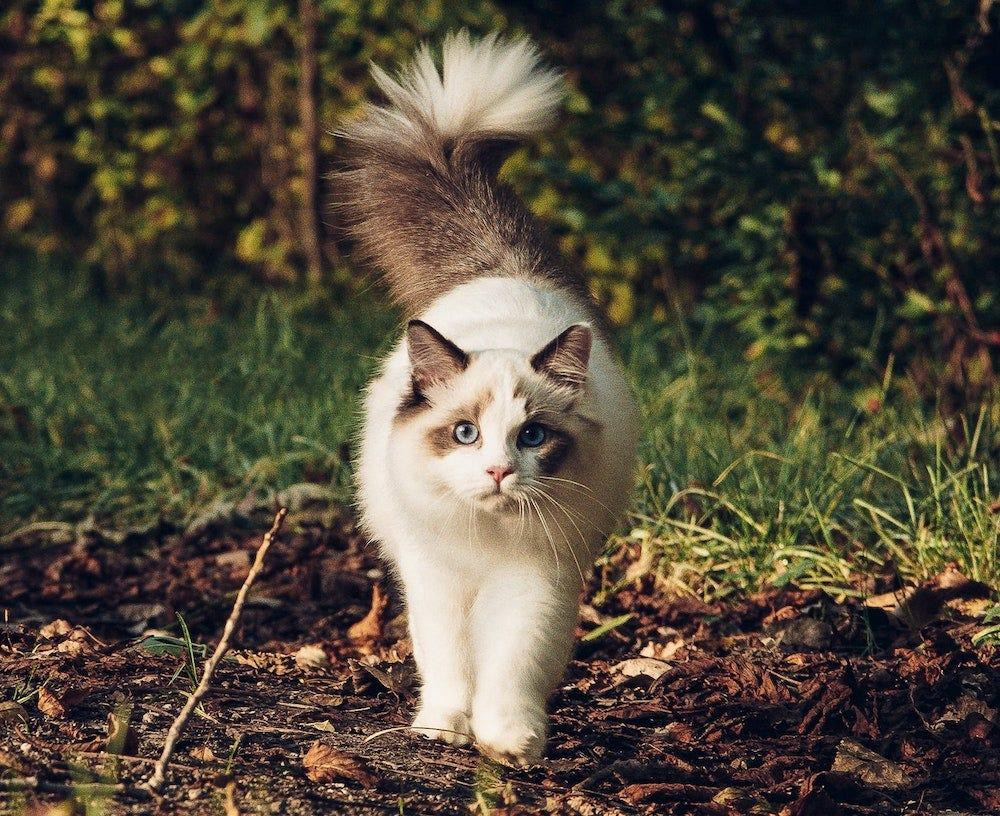 A fluffy Ragdoll cat with gentle blue eyes, highlighting its plush coat and affectionate demeanor.
A fluffy Ragdoll cat with gentle blue eyes, highlighting its plush coat and affectionate demeanor.
Ragdoll cats, known for their docile and cuddly nature, are another blue-eyed breed. Developed in California in the 1960s, they are large, colorpoint cats with striking blue eyes.
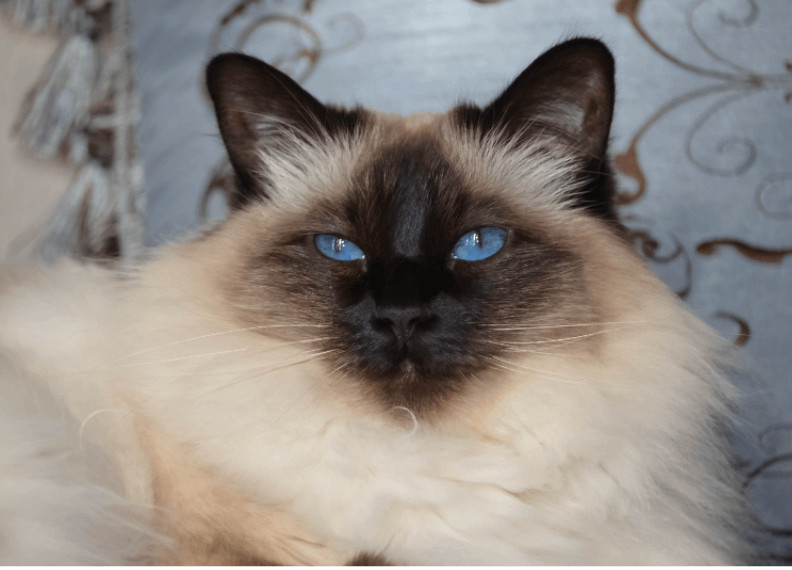 A Balinese cat with bright blue eyes, showcasing its elegant longhaired coat, a variant of the Siamese breed.
A Balinese cat with bright blue eyes, showcasing its elegant longhaired coat, a variant of the Siamese breed.
The Balinese cat, a long-haired version of the Siamese, shares the Siamese’s colorpoint coat and vivid blue eyes but is considered hypoallergenic, unlike its short-haired relative.
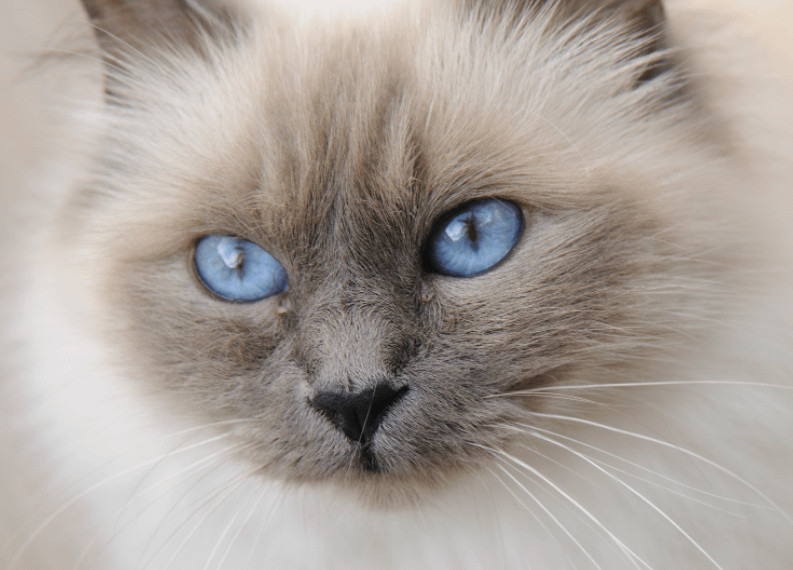 A Birman cat with intense blue eyes, emphasizing its semi-longhaired coat and the breed's sacred origins.
A Birman cat with intense blue eyes, emphasizing its semi-longhaired coat and the breed's sacred origins.
The Birman cat, or “Sacred Cat of Burma,” is an ancient breed with deep sapphire blue eyes, steeped in legend as companions to temple priests in Myanmar.
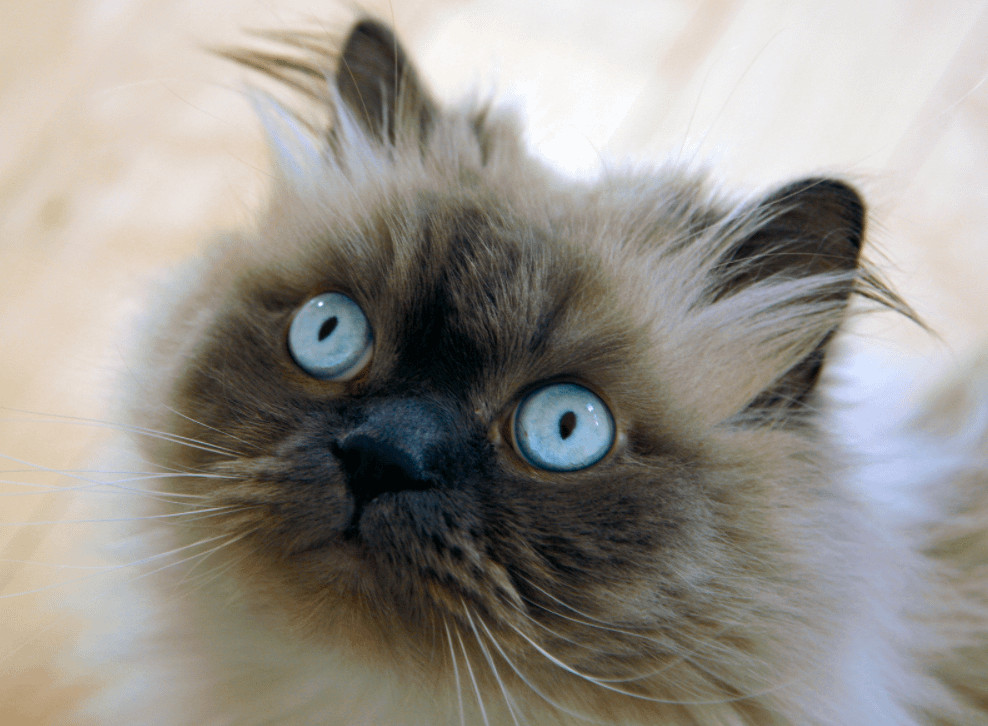 A Himalayan cat with serene blue eyes, blending the long fur of the Persian with the colorpoint pattern of the Siamese.
A Himalayan cat with serene blue eyes, blending the long fur of the Persian with the colorpoint pattern of the Siamese.
Himalayan cats are a hybrid breed combining the Persian’s long fur and the Siamese’s colorpoint pattern and blue eyes, resulting in sweet and docile cats with striking blue gazes.
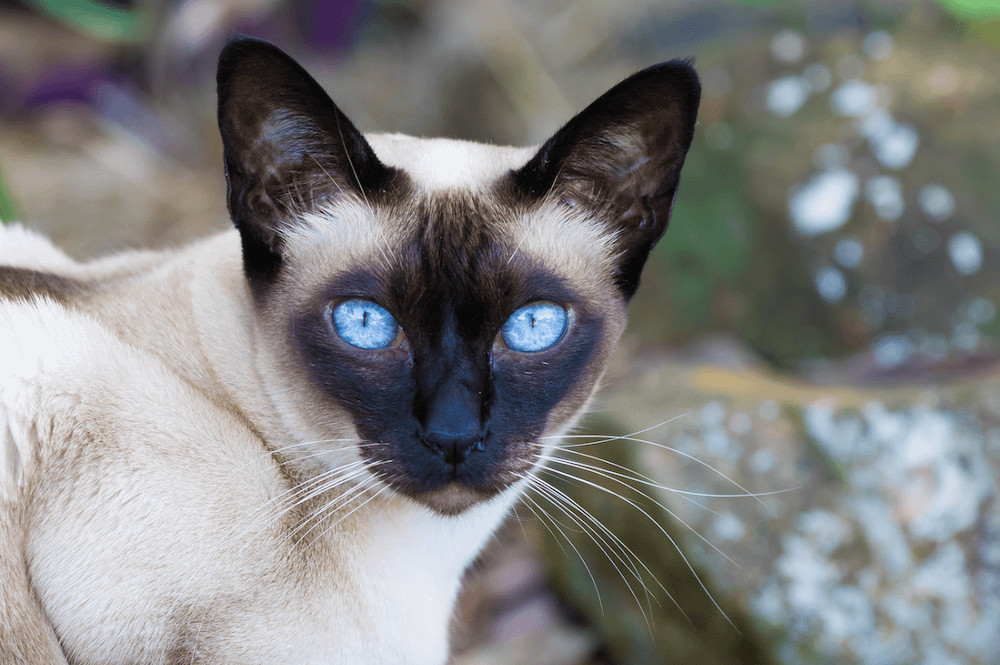 A Tonkinese cat with captivating aqua eyes, a unique feature of this breed derived from Siamese and Burmese lineage.
A Tonkinese cat with captivating aqua eyes, a unique feature of this breed derived from Siamese and Burmese lineage.
Tonkinese cats are known for their aqua-colored eyes, a unique trait derived from their Siamese and Burmese ancestry. While they can have other eye colors, aqua is their signature.
While black cats with blue eyes are rare, encountering one is considered a stroke of luck.
Deafness and White Cats with Blue Eyes
It’s a common misconception that all white cats with blue eyes are deaf. However, they do have a higher predisposition to deafness. Studies from Cornell Feline Health Center indicate that 65-85% of all-white cats with two blue eyes are deaf, and around 40% of white cats with one blue eye are deaf in the ear on the blue-eyed side.
Yellow Eyed Cats: A Common and Luminous Shade
Yellow eyes are a relatively common and beautiful cat eye color. The combination of a black cat with yellow eyes, as seen in Bombay cats, is particularly striking. Breeds like Burmese, Bengal, American Shorthair, and Maine Coon also frequently exhibit yellow eyes.
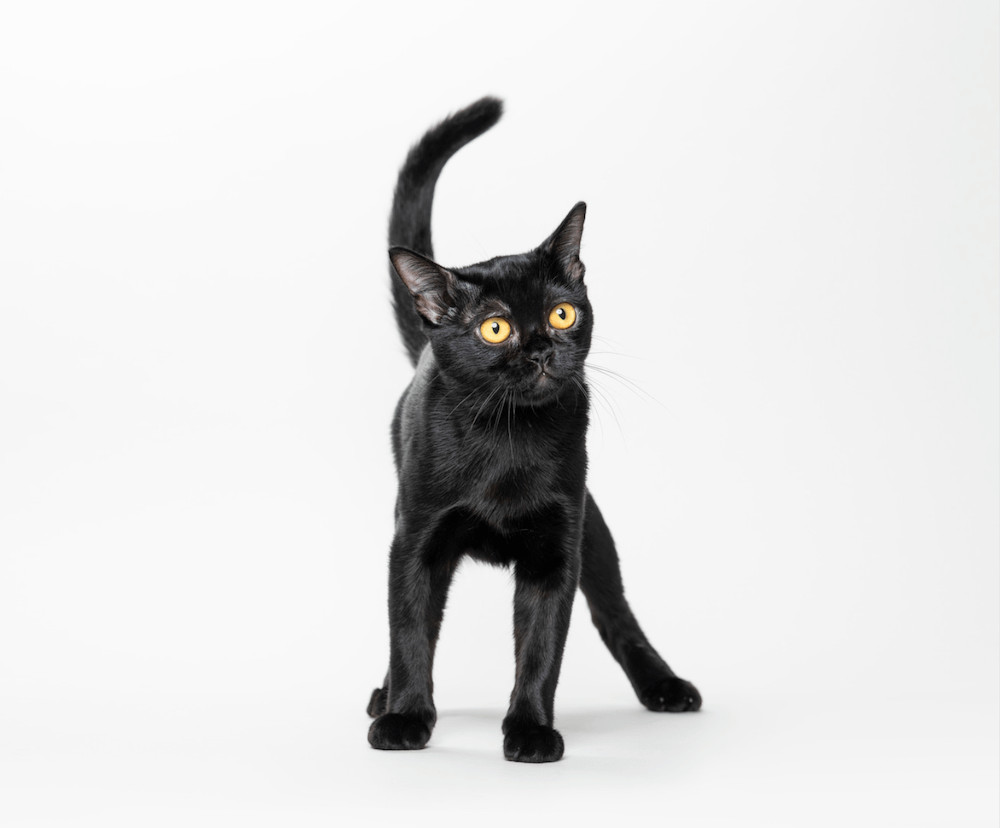 A sleek Bombay cat with bright yellow eyes, showcasing its panther-like appearance and captivating gaze.
A sleek Bombay cat with bright yellow eyes, showcasing its panther-like appearance and captivating gaze.
The Bombay cat, a “miniature panther,” is a cross between a Burmese and an American Shorthair, known for its black coat and penetrating yellow eyes, along with a people-oriented personality.
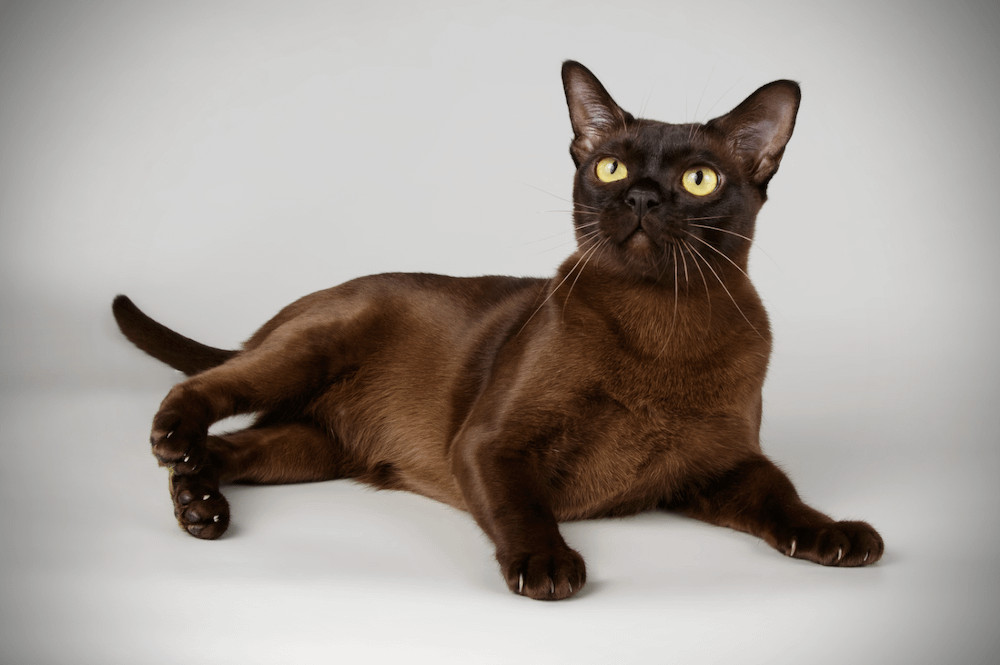 A Burmese cat with luminous yellow eyes, emphasizing its sable coat and playful temperament.
A Burmese cat with luminous yellow eyes, emphasizing its sable coat and playful temperament.
Burmese cats, revered in ancient Burma, possess sleek sable coats and luminous yellow eyes, alongside an engaging and entertaining personality.
Green Eyed Cats: Gooseberry and Emerald Tones
Green is another frequently seen cat eye color. Russian Blues and Egyptian Maus are particularly well-known for their green eyes. Other breeds include Somali, Bengal, American Shorthair, Norwegian Forest cat, and Abyssinian.
 A Russian Blue cat with striking green eyes, contrasting beautifully with its silvery blue coat and elegant appearance.
A Russian Blue cat with striking green eyes, contrasting beautifully with its silvery blue coat and elegant appearance.
Russian Blue cats combine striking green eyes with a luxurious blue coat and a gentle, though sometimes shy, temperament. They are believed to originate from the Archangel Isles in Russia.
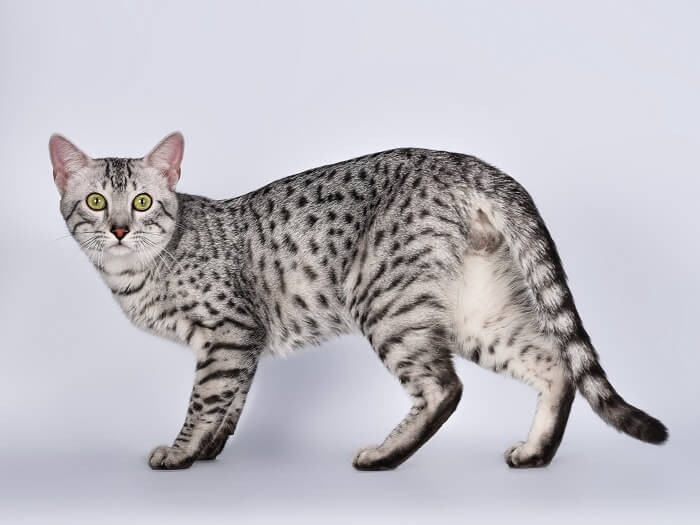 An Egyptian Mau cat with distinctive gooseberry green eyes, highlighting its spotted coat and ancient lineage.
An Egyptian Mau cat with distinctive gooseberry green eyes, highlighting its spotted coat and ancient lineage.
Egyptian Maus boast unique “gooseberry green” eyes and a naturally spotted coat, and are known as one of the oldest and fastest domesticated cat breeds.
Orange Eyed Cats: Amber Lamps in Feline Form
Orange or amber eyes are less common than yellow or green. The British Shorthair is famous for its “lamp-like” orange gaze, while the Turkish Van displays a softer amber hue. Bombay cats can also exhibit orange eyes.
 A grey British Shorthair cat with captivating orange eyes, showcasing its round face and dense coat.
A grey British Shorthair cat with captivating orange eyes, showcasing its round face and dense coat.
Gold Eyed Cats: Rich and Luminous
Gold eyes, while similar to yellow, have a richer, more intense pigmentation. Breeds like Abyssinian, Burmese, Bombay, Bengal, American Shorthair, and Somali can have golden eyes.
 An Abyssinian cat with brilliant gold eyes, complementing its ticked coat and alert expression.
An Abyssinian cat with brilliant gold eyes, complementing its ticked coat and alert expression.
Brown Eyed Cats: The Rarest and Most Misunderstood
Cats with what appear to be brown eyes are arguably the rarest. True solid brown eyes technically don’t exist in cats, but certain shades of deep gold, copper, hazel, and amber can create the illusion of brown. The Ocicat is a breed that often exhibits these deeper, brown-like hues. These shades are often overlooked, yet they bring a unique warmth and depth to a cat’s expression, making the brown eyed cat a truly special feline.
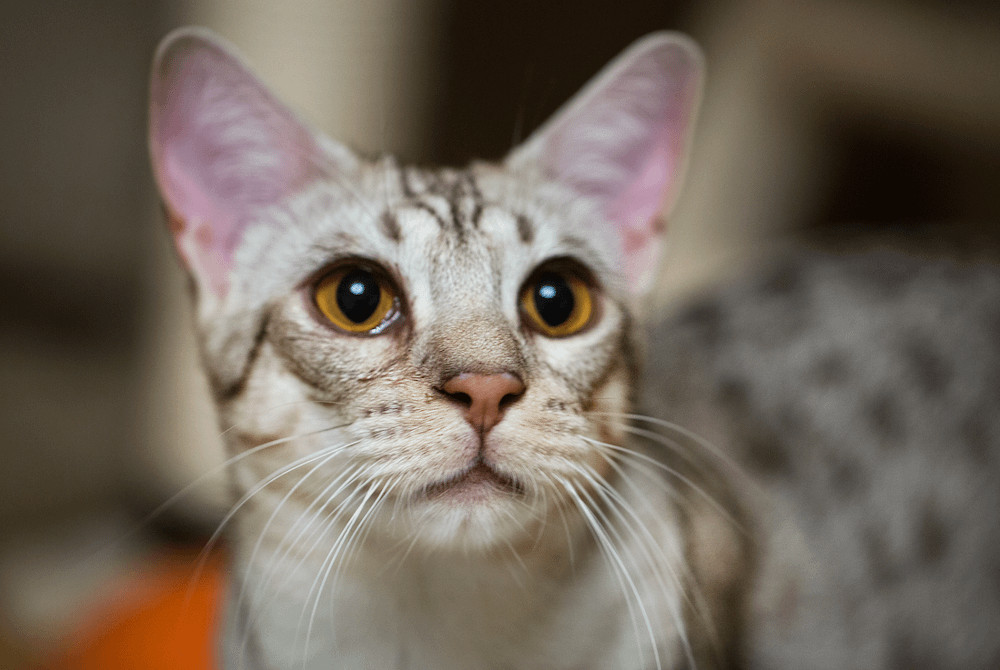 An Ocicat with warm brown eyes, showcasing its wild appearance and the subtle brown tones in its gaze.
An Ocicat with warm brown eyes, showcasing its wild appearance and the subtle brown tones in its gaze.
Copper Eyed Cats: Penny-Colored Beauty
Copper eyes are also relatively uncommon, often described interchangeably with orange or amber. British Shorthairs and Bombay cats can have copper eyes. Scottish Folds, Maine Coons, and Persians can also display copper tones.
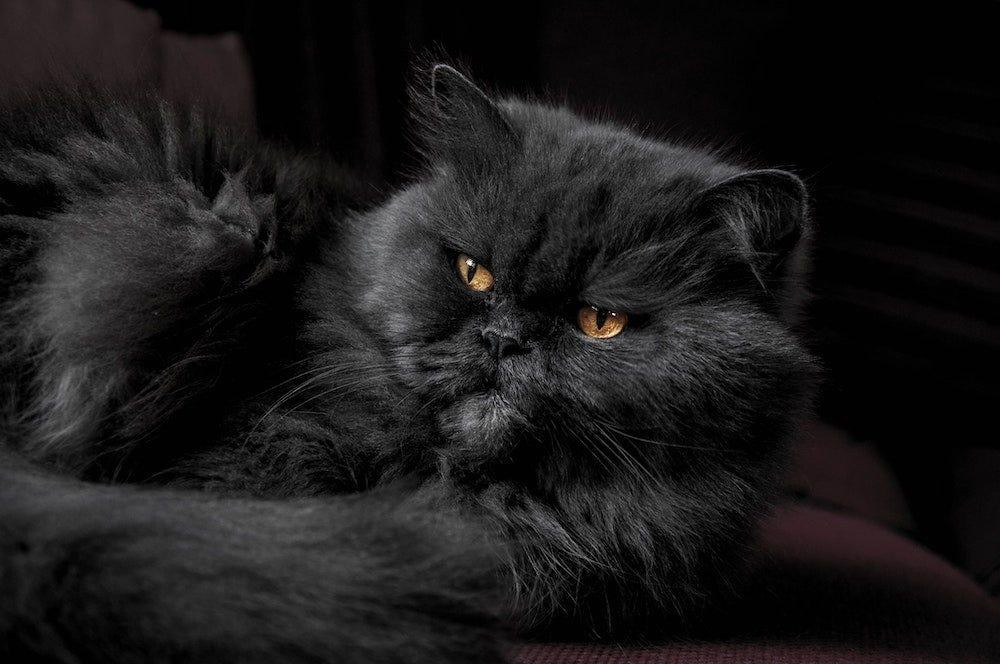 A Persian cat with striking copper eyes, highlighting its luxurious long coat and expressive face.
A Persian cat with striking copper eyes, highlighting its luxurious long coat and expressive face.
Hazel Eyed Cats: A Blend of Colors
Hazel eyes are common in mixed breed cats, often presenting as a yellow-green mix. Purebreds like American Shorthairs, Maine Coons, and Norwegian Forest cats can also have hazel eyes.
 An American Shorthair cat with hazel eyes, showcasing its classic tabby markings and the mixed tones in its gaze.
An American Shorthair cat with hazel eyes, showcasing its classic tabby markings and the mixed tones in its gaze.
Different-Colored Eyes: Heterochromia’s Charm
“Odd-eyed” cats with heterochromia, displaying two different eye colors, are captivating. Often associated with white or mostly white fur, this genetic mutation is more common in cats than humans. Turkish Angoras and Khao Manee cats are famous for heterochromia.
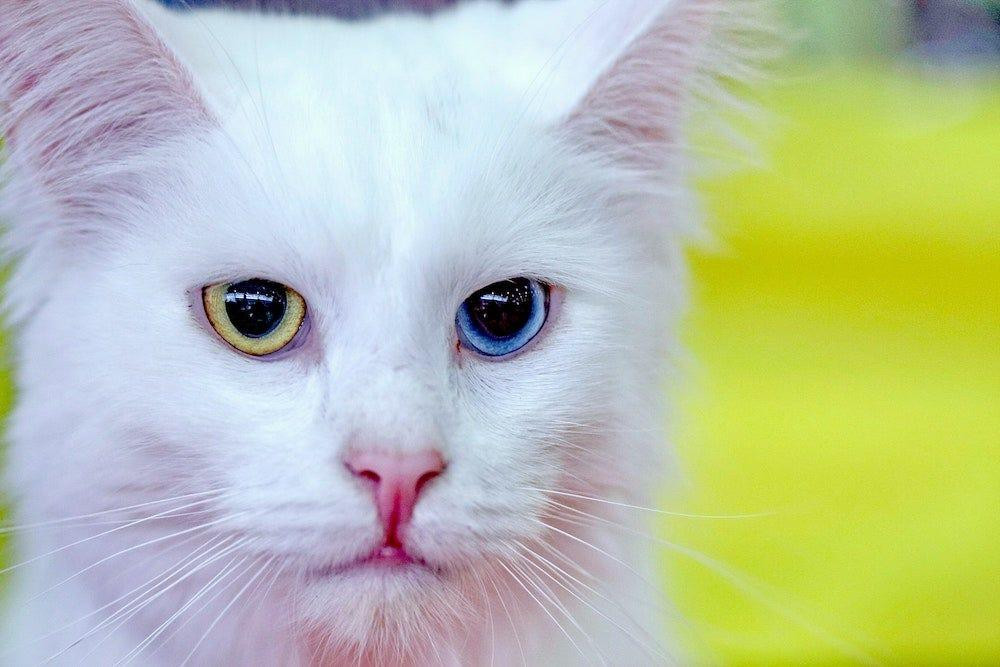 A Turkish Angora cat with captivatingly different colored eyes, showcasing its elegant white fur and striking heterochromia.
A Turkish Angora cat with captivatingly different colored eyes, showcasing its elegant white fur and striking heterochromia.
Dichroic or dichromatic eyes, with two colors within a single iris (e.g., a yellow ring around green), are even rarer.
Cat eye colors are indeed as fascinating as the felines themselves. Regardless of hue, the captivating gaze of a cat is universally appreciated. If you’re concerned about your cat’s eye health, consult cat eye problems as reviewed by veterinarian Dr. Justine Lee.
Are Black Cat Eyes Truly Black?
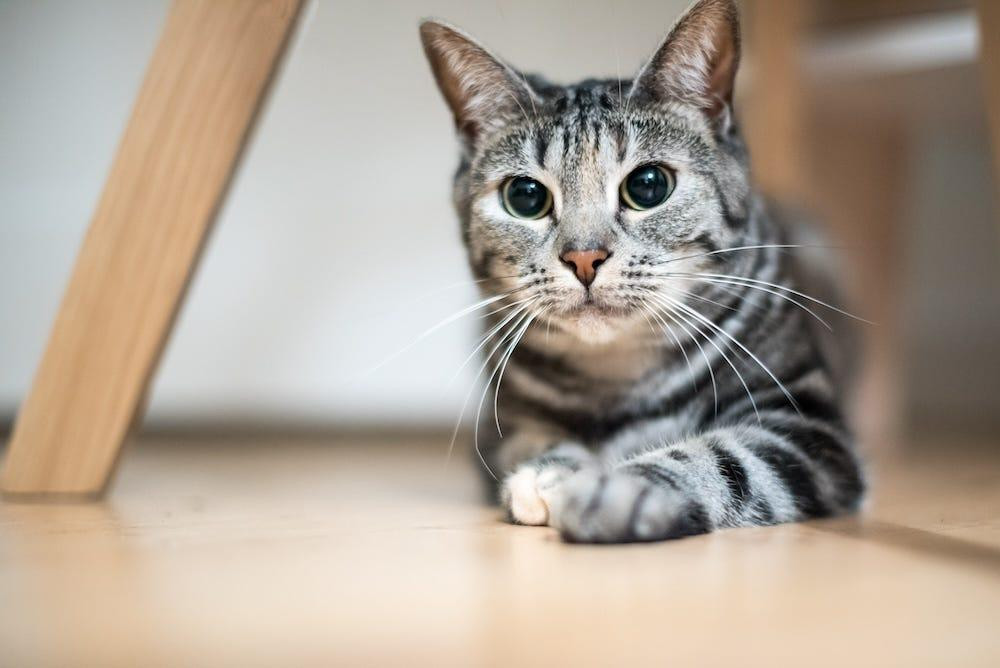 Close up of dilated black cat eyes, showing the expanded pupils in low light conditions and the depth of feline gaze.
Close up of dilated black cat eyes, showing the expanded pupils in low light conditions and the depth of feline gaze.
While cat eyes can appear almost black, especially in low light, they are not truly black. In dim lighting, a cat’s pupils dilate to maximize light intake, making the dark iris seem even larger and deeper. The tapetum lucidum further enhances this effect, contributing to the intense, sometimes seemingly black, appearance of cat eyes in certain conditions, especially in black cats.
Photo credits:
- Black and white cat: Seb via Unsplash
- Siamese: Alecsander Alves via Unsplash
- Ragdoll: Husqqqy via Unsplash
- Black cat with green eyes: Simion Andreea-Marina via Unsplash
- Persian: Stefan Ivanov
- Turkish Angora: Sergey Semin via Unsplash
[


